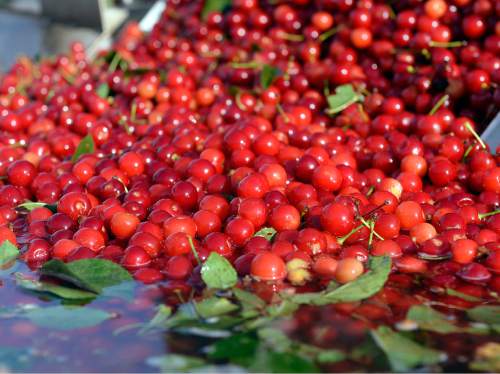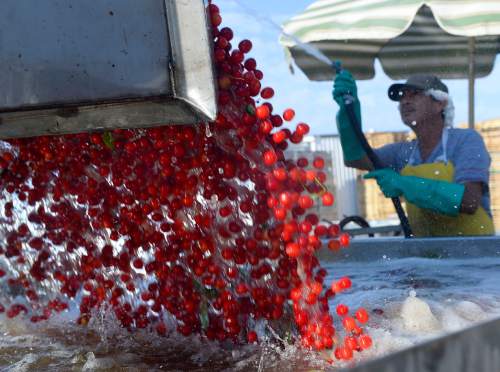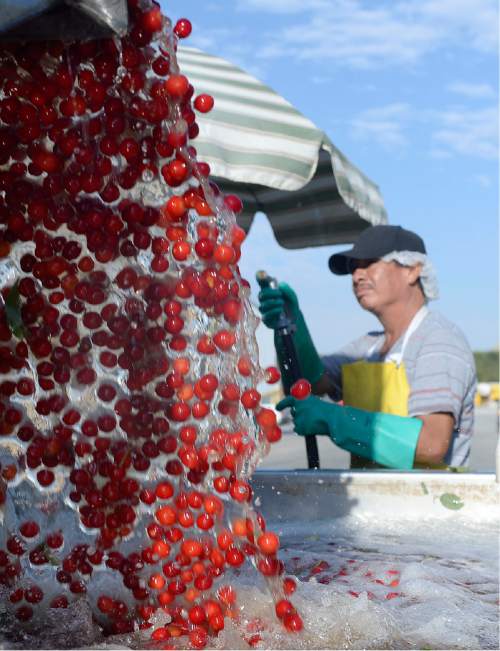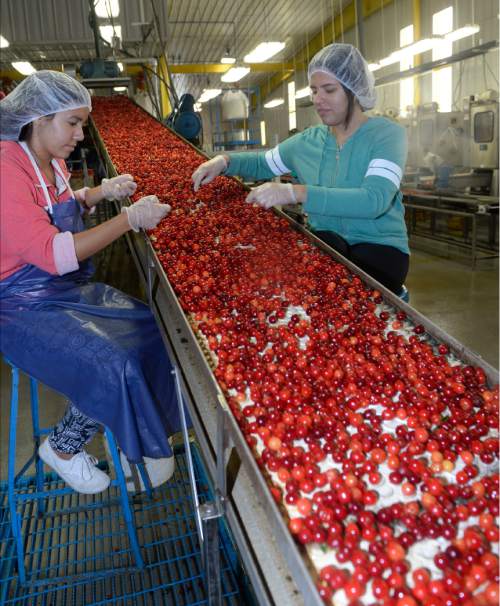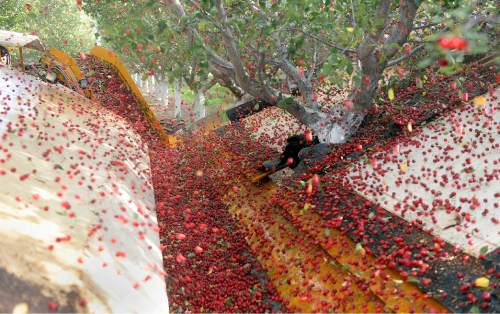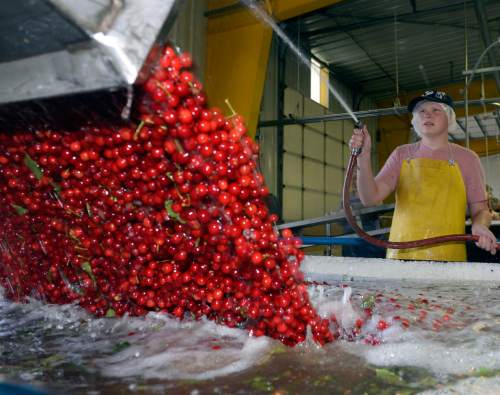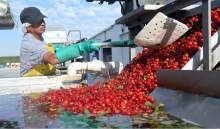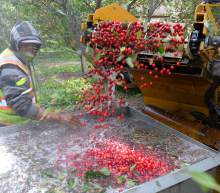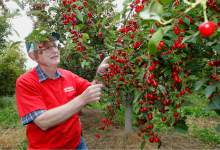This is an archived article that was published on sltrib.com in 2016, and information in the article may be outdated. It is provided only for personal research purposes and may not be reprinted.
Utah's tart cherry farmers are having another sweet season, expecting nearly 50 million pounds of fruit by the time the 2016 harvest ends later this week.
That number could match — or exceed — the record set in 2014, when Utah growers harvested 49.8 million pounds of tart cherries.
"This year's crop is about the same as two years ago, when we had the largest crop ever," said Robert McMullin, owner of McMullin Orchards in Payson. "It looks similar, maybe even a few pounds more."
Final numbers won't be in for several weeks as some areas are still harvesting, he said.
Utah ranks a distant second in the U.S. for its production of Montmorency tart cherries. It comes in behind Michigan, which averages more than 200 million pounds annually. Utah averages between 30 million and 40 million pounds a year, according to the Northwest Cherry Growers industry board. In 2015, for example, Utah had an average crop coming in at about 38 million pounds.
Most of the Utah tart cherries are grown in the region surrounding Utah Lake, where the elevation, climate and soil combine to help the fruit trees thrive. Eight family farms produce most of Utah's tart cherry crop; together they make up the Payson Fruit Growers cooperative.
Years ago, most of the crop was turned into pie filling. Today, the majority of tart cherries grown in Utah are dried using a process perfected by the Payson cooperative. After drying, the cherries are packaged for use in granola, trail mixes and other snacks. A small amount still goes for canning or is turned into cherry juice concentrate.
McMullin said sweet cherries, a significantly smaller crop in Utah, also did well this year.
Several things contributed to the healthy harvest for both types of cherries in 2016, said Brent Black, the fruit specialist for the Utah State University Extension.
"There were no cold-weather snaps this past winter that could have damaged developing flower buds," he said. Utah also had a mild spring without any late frosts that often damage the flowers. The region also experienced "good pollination weather that created strong bee activity to get the flowers adequately pollinated."
Black said the age and health of Utah's trees also play a factor. A large portion of the trees in Utah's cherry orchards are 12 to 18 years old, a time when there is maximum productivity potential. Farmers also have been diligent about managing disease and insects and monitoring soil and plant nutrition, which is important "to maintain healthy trees that can carry that kind of crop load," he said.
Tart cherries aren't the only successful fruit crop in Utah.
"Because of the favorable spring conditions, many areas that are typically marginal for apricots are seeing extremely high yields," said Black. "My neighbor's tree is going to start losing branches due to a massive crop load. I've seen this in home gardens throughout northern Utah."




